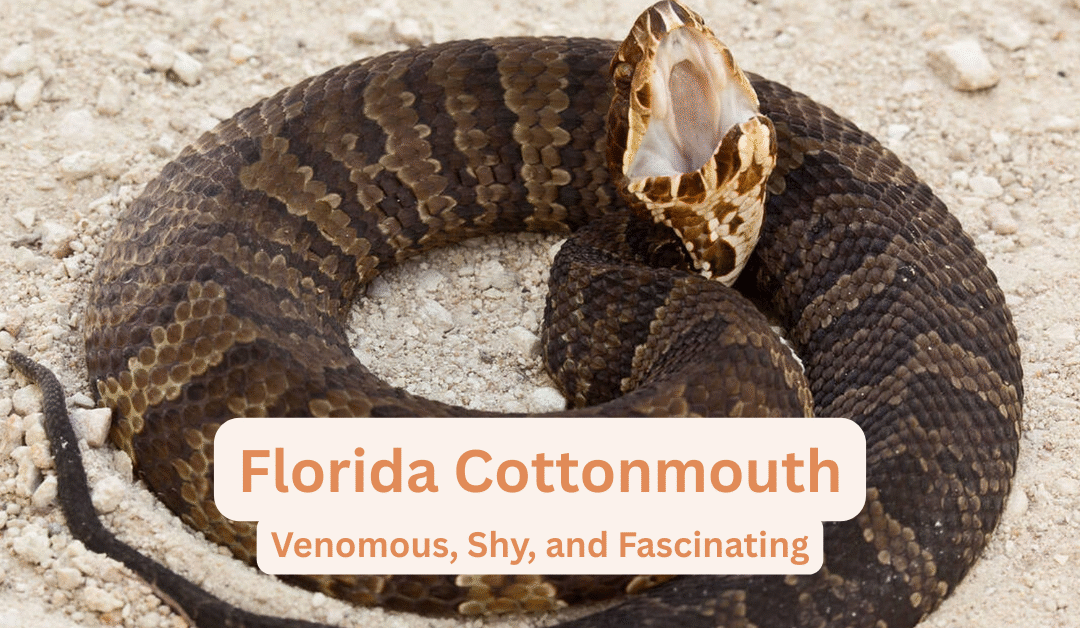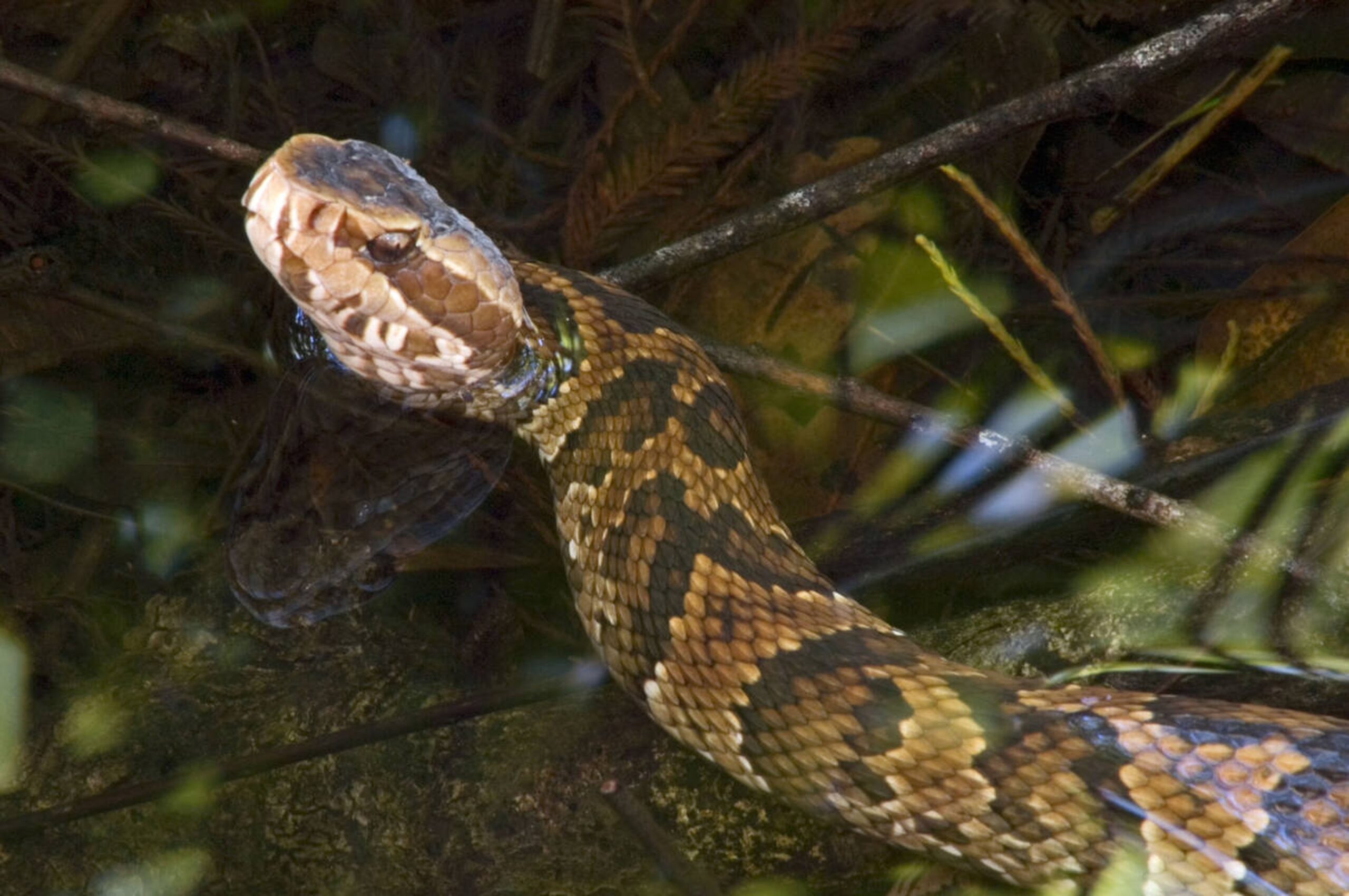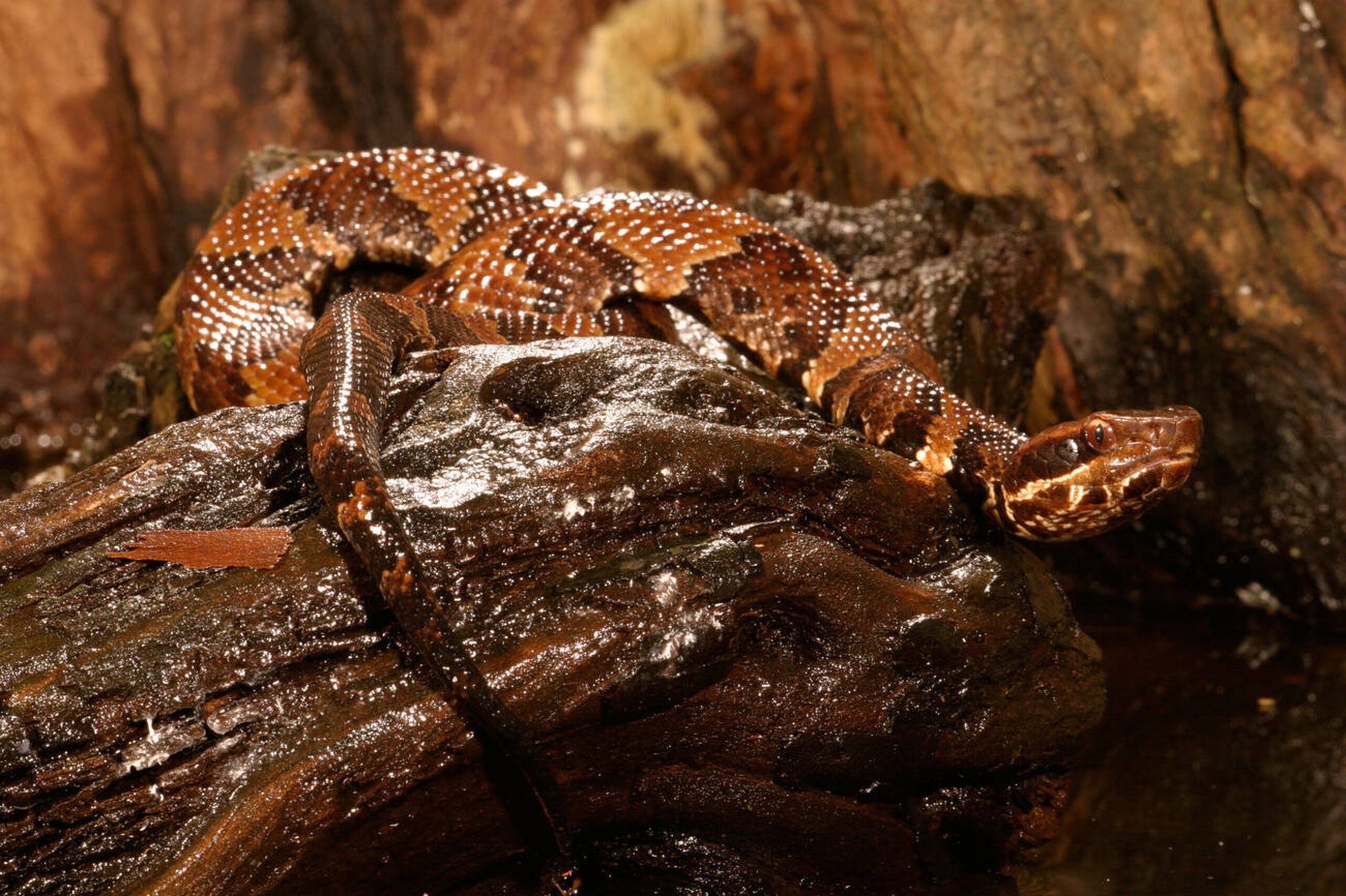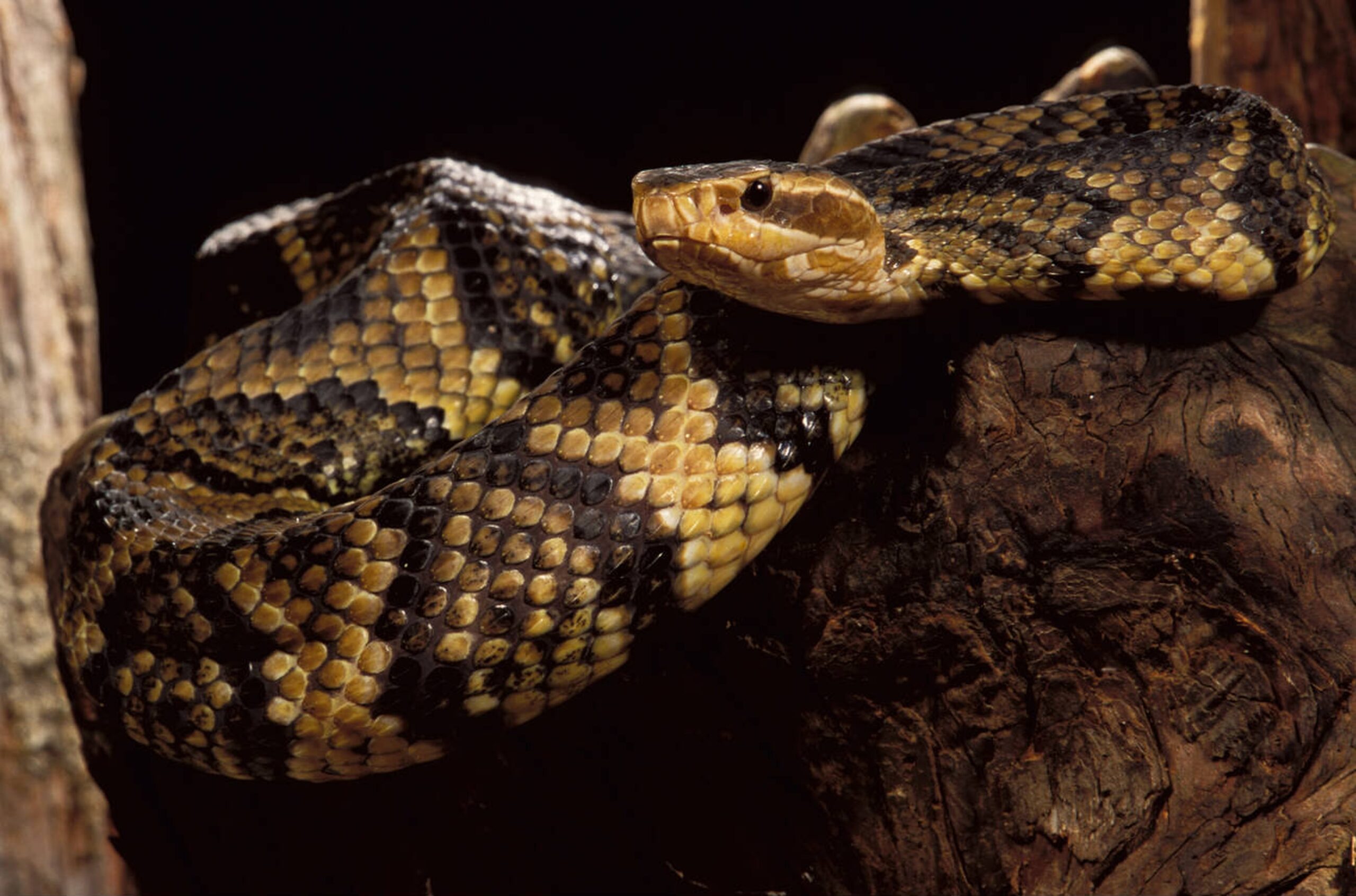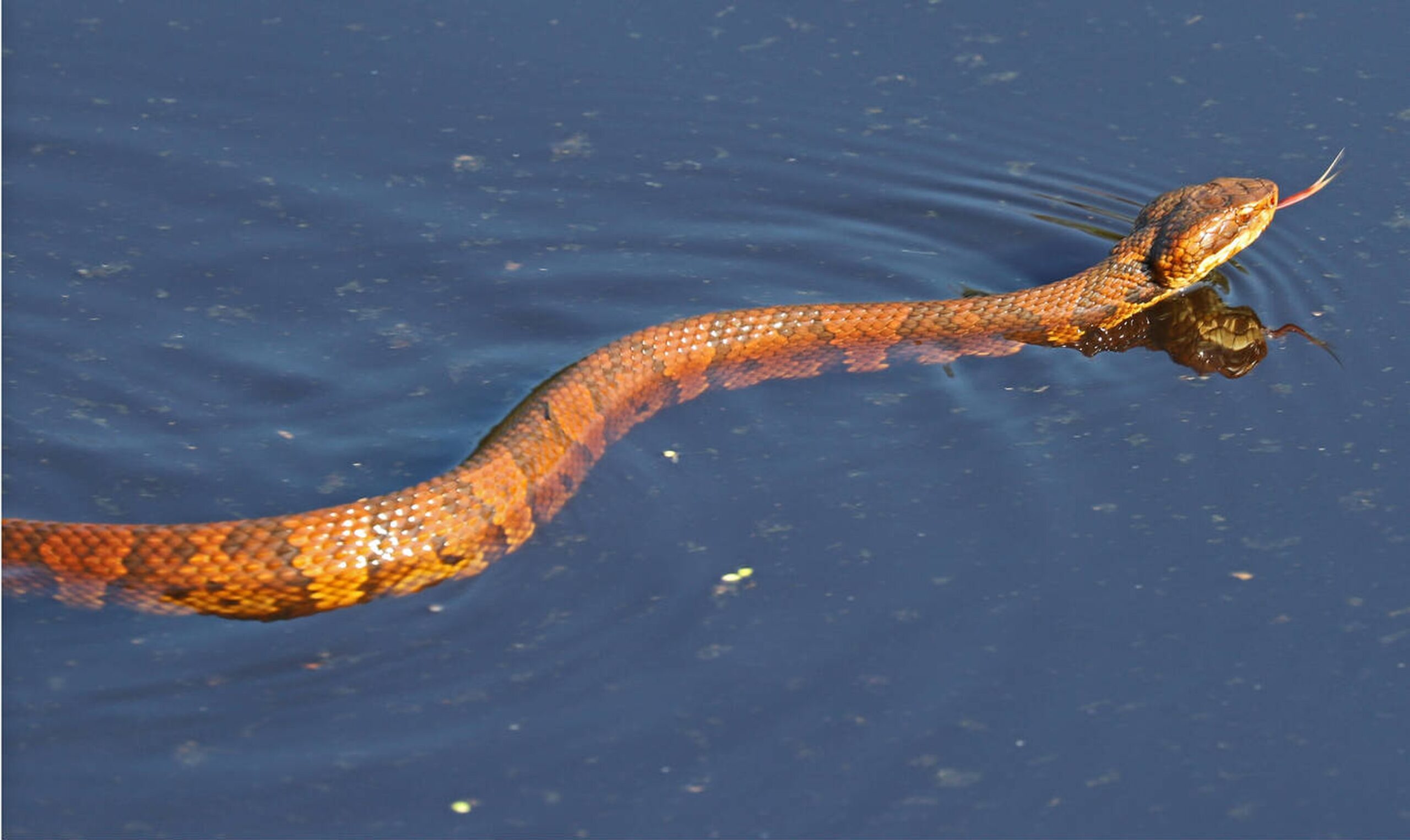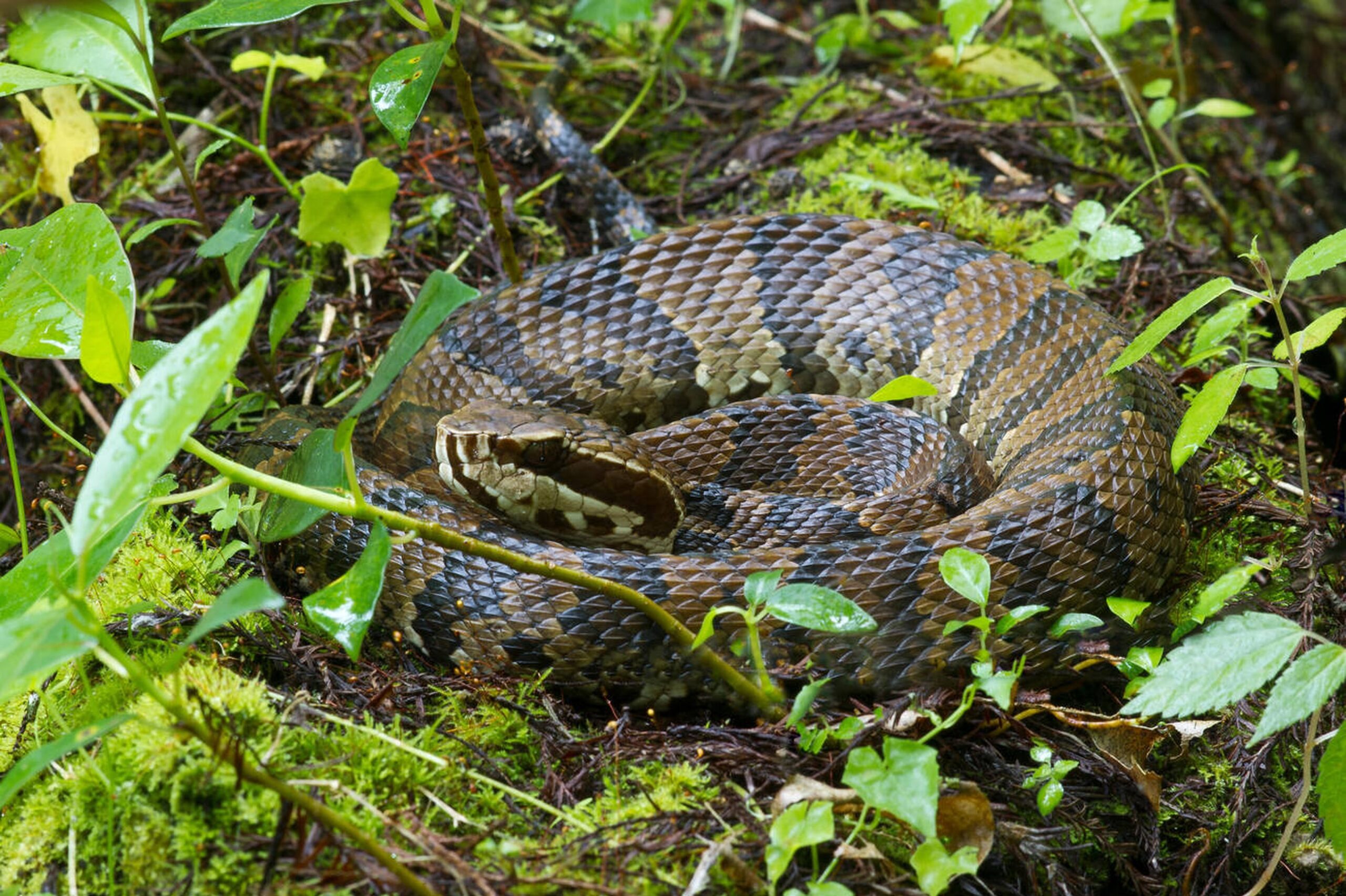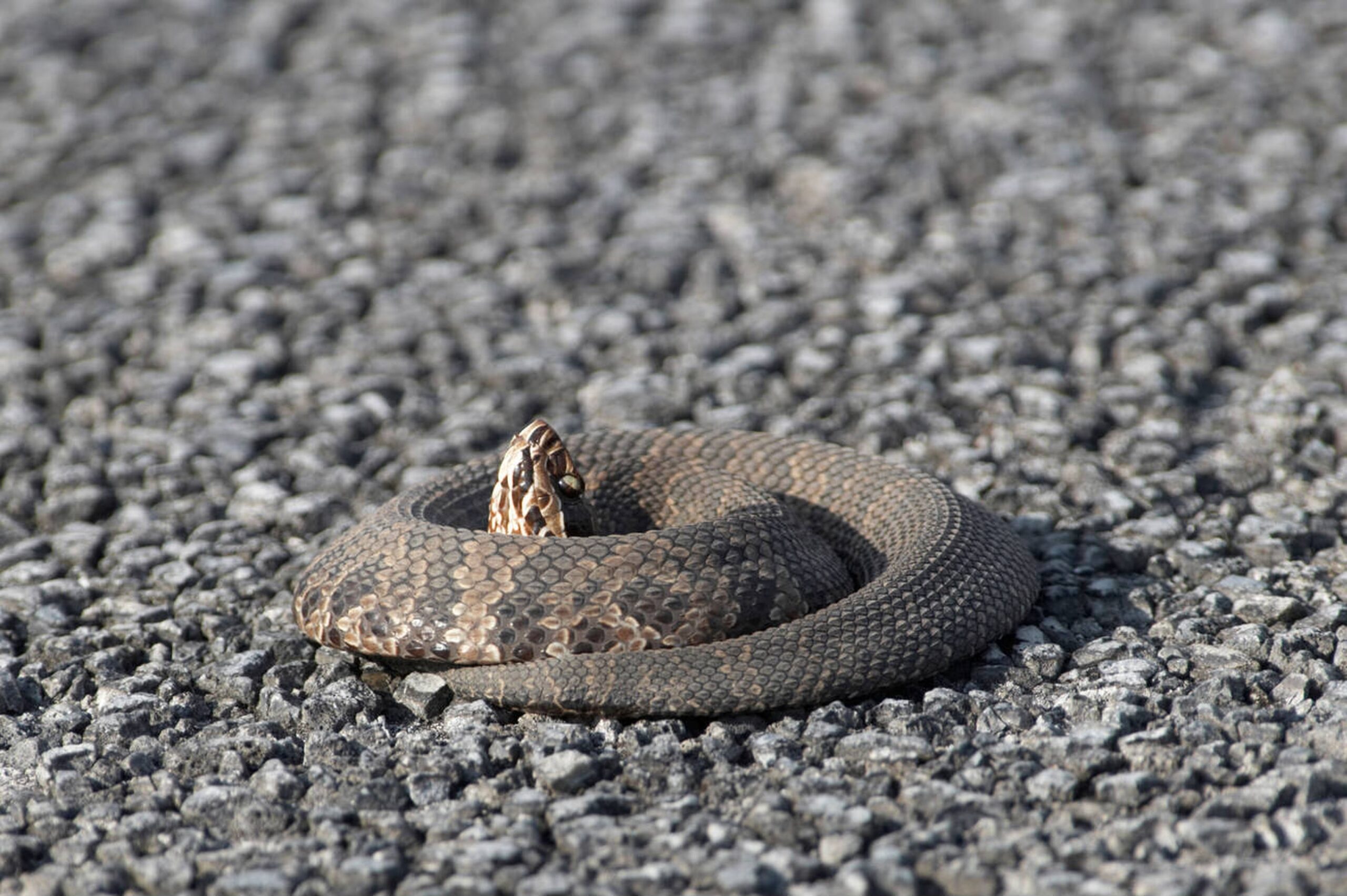Introduction
The Florida Cottonmouth, also known as the Water Moccasin, is one of the most iconic venomous snakes in Florida. Recognized for its distinct markings and shy nature, the Cottonmouth can be found across the state in wetland areas. This guide will help you identify this dangerous yet fascinating snake, understand its behavior, and learn how to stay safe if you encounter one.
1. Florida Cottonmouth Identification – How to Spot a Water Moccasin Snake
The Florida Cottonmouth (scientifically known as Agkistrodon piscivorus) is a venomous snake with unique identification features. It’s often mistaken for harmless non-venomous species, so understanding its traits is crucial.
Florida Cottonmouth Snake Physical Description – Features of the Water Moccasin
-
-
Coloration: Typically dark brown or black with a light underside.
-
Distinctive Bands: Older Cottonmouths tend to be darker, but younger ones may show lighter banding.
-
Size: Cottonmouths grow to about 2 to 4 feet long.
-
Head Shape: A triangular, broad head, which is a key sign of many venomous snakes.
-
How to Differentiate the Florida Cottonmouth from Other Snakes – Water Moccasin vs. Non-Venomous Species
-
-
Water Moccasins have a distinct triangular head and vertical pupils, unlike harmless water snakes that have round pupils.
-
Florida Cottonmouths can be easily confused with other species such as the Florida Coral Snake. Learn more about identifying the Florida Coral Snake
2. Florida Cottonmouth Habitat and Range – Where to Find the Water Moccasin Snake
The Florida Cottonmouth thrives in wetland habitats across the state. It is commonly found in:
Preferred Habitats of the Florida Cottonmouth – Wetlands and Swamps for Water Moccasins
-
Marshes, swamps, and slow-moving waters (like ponds and streams).
Geographic Range of the Florida Cottonmouth – Where Water Moccasins Live in Florida
-
The Florida Cottonmouth is found all over Florida, but it’s most abundant in the southern and central parts of the state.
The Florida Rat Snake is another common snake in Florida’s wetlands, though it poses no threat. For a detailed guide on Florida’s rat snake types, check out our article here
3. Florida Cottonmouth Behavior and Diet – What Water Moccasins Eat
Understanding a Cottonmouth’s behavior can help prevent dangerous encounters.
Florida Cottonmouth Feeding Habits – What Water Moccasins Hunt and Eat
-
Cottonmouths primarily feed on small mammals, amphibians, and fish.
How They Hunt:
-
They hunt by ambush, often waiting for prey to come within striking distance before striking.
Defensive Behavior of the Florida Cottonmouth – Water Moccasin Warning Display
-
When threatened, they flatten their bodies and open their mouths, displaying a cotton-like white interior, which gives them their name. This is a warning display.
Warning: If you see this behavior, it’s best to give the snake space to avoid provoking it.
While the Florida Cottonmouth feeds on similar prey, such as small mammals and amphibians, Florida Rat Snakes also share the same diet. Learn more about Florida and Eastern Rat Snakes here
4. Florida Cottonmouth Venom – Dangers of the Water Moccasin Snake Bite
The Florida Cottonmouth produces potent venom that can cause serious damage to humans if bitten.
What Happens When Bitten by a Florida Cottonmouth? – Symptoms of a Water Moccasin Bite
-
-
Symptoms of a bite: Swelling, pain, and difficulty breathing (in severe cases).
-
First Aid Tips:
-
Stay calm and seek immediate medical attention.
-
Do NOT try to suck out venom or apply ice.
-
Call 911 or head to the nearest emergency room.
-
-
Florida Cottonmouth vs. Water Moccasin – Are They the Same Snake?
-
-
These names are often used interchangeably. The Water Moccasin is the common name for Agkistrodon piscivorus, while Cottonmouth refers to the snake’s distinctive defensive behavior (opening its mouth like a cotton ball).
-
If you’re concerned about venomous snakes, it’s important to distinguish the Cottonmouth from harmless species like the Florida Rat Snake. Find out more about Florida Rat Snakes here
5. Florida Cottonmouth Conservation Status – Protecting the Water Moccasin Snake
Florida’s Cottonmouth is a protected species in certain areas, and many local laws prohibit the killing of this species.
Conservation Efforts:
-
Some populations of Cottonmouths are facing threats due to habitat destruction, illegal hunting, and roadkill.
Protecting Cottonmouths:
-
It’s crucial to respect these animals and allow them to thrive in their natural habitat. Wildlife conservation efforts are in place to ensure these snakes continue to play an important role in Florida’s ecosystem.
In contrast to the venomous Florida Cottonmouth, the Louisiana King Snake is a non-venomous species that shares similar hunting habits. Read more about the Louisiana King Snake here.
6. Florida Cottonmouth Safety Tips – How to Avoid the Water Moccasin Snake
If you encounter a Florida Cottonmouth, here are some important safety tips to follow:
What to Do If You See a Florida Cottonmouth – Stay Safe from Water Moccasins
-
-
Don’t provoke the snake. Most bites occur when the snake is cornered or handled.
-
If you spot a Cottonmouth, give it space and slowly move away.
-
Avoid tall grass and wetland areas where Cottonmouths are common. Always wear boots when walking through marshes or swamps.
-
What to Do If You See One:
-
-
Stay calm and move away slowly.
-
Alert others around you, especially if it’s in a common area.
-
Avoiding Encounters:
-
-
Walk carefully in areas where Cottonmouths are known to live, especially during mating season (spring and early summer) when they are more active.
-
Be cautious when fishing or kayaking near slow-moving water.
-
FAQ – Florida Cottonmouth (Water Moccasin)
How venomous are Florida Cottonmouths?
Which is deadlier, Cottonmouth or Copperhead?
Is Cottonmouth lethal?
What is the difference between a Cottonmouth and a Water Moccasin in Florida?
What do Florida Cottonmouths eat?
How to identify a Florida Cottonmouth?
Are Florida Cottonmouths aggressive?
How can you tell if a Cottonmouth is venomous?
How to avoid a Cottonmouth encounter?
What should you do if bitten by a Cottonmouth?
The Florida Cottonmouth is a fascinating, but potentially dangerous, snake. By learning how to identify it, understanding its habitat and behavior, and knowing how to stay safe in its presence, you can coexist with this vital species while avoiding dangerous encounters. If you do encounter a Cottonmouth, remember to give it space and respect its role in Florida’s ecosystem.
For more information on Florida’s wildlife conservation efforts and how to protect the state’s species, check out Wildlife Florida: Wildlife Florida

